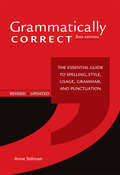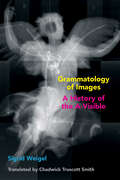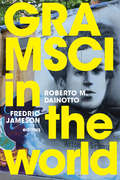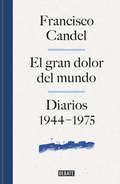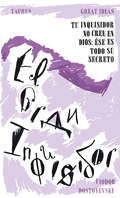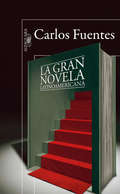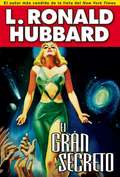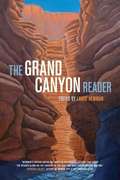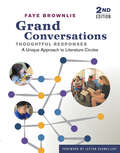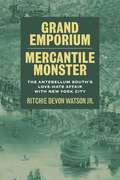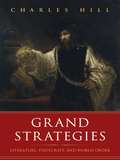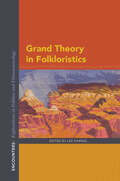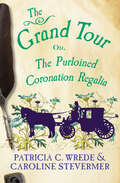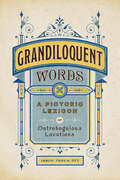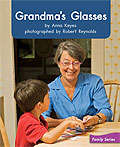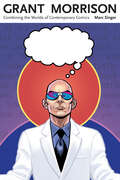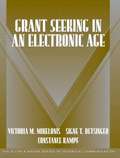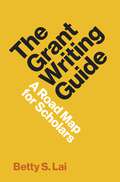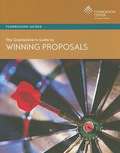- Table View
- List View
Grammatically Correct (2nd Edition): The Essential Guide to Spelling, Style, Usage, Grammar, and Punctuation
by Anne StilmanHow does good writing stand out? If its purpose is to convey facts, findings, or instructions, it need be read only once for its content to be clear. If its purpose is to entertain or to provoke thought, it makes readers want to come back for more. Revised and updated, this guide covers four essential aspects of good writing: Individual words - spelling variations, hyphenation, frequently confused homonyms, frequently misused words and phrases, irregular plurals and negatives, and uses of capitalization and type style to add special meanings Punctuation - the role of each mark in achieving clarity and affecting tone, and demonstration of how misuses can lead to ambiguity Syntax and structure - agreement of subject and verb, parallel construction, modifiers, tenses, pronouns, active versus passive voice, and more Style - advice on the less hard-and-fast areas of clarity and tone, including sentence length and order, conciseness, simplification, reading level, jargon and clichés, and subtletyFilled with self-test exercises and whimsical literary quotations, Grammatically Correct steers clear of academic stuffiness, focusing instead on practical strategies and intuitive explanations. Discussions are designed to get to the heart of a concept and provide a sufficient sense of when and how to use it, along with examples that show what ambiguities or misinterpretations might result if the rules are not followed. In cases where there is more than one acceptable way to do something, the approach is not to prescribe one over another but simply to describe the options. Readers of this book will never break the rules of language again - unintentionally.
Grammatology of Images: A History of the A-Visible (Commonalities)
by Sigrid WeigelGrammatology of Images radically alters how we approach images. Instead of asking for the history, power, or essence of images, Sigrid Weigel addresses imaging as such. The book considers how something a-visible gets transformed into an image. Weigel scrutinizes the moment of mis-en-apparition, of making an appearance, and the process of concealment that accompanies any imaging.Weigel reinterprets Derrida’s and Freud’s concept of the trace as that which must be thought before something exists. In doing so, she illuminates the threshold between traces and iconic images, between something immaterial and its pictorial representation. Chapters alternate between general accounts of the line, the index, the effigy, and the cult-image, and case studies from the history of science, art, politics, and religion, involving faces as indicators of emotion, caricatures as effigies of defamation, and angels as embodiments of transcendental ideas.Weigel’s approach to images illuminates fascinating, unexpected correspondences between premodern and contemporary image-practices, between the history of religion and the modern sciences, and between things that are and are not understood as art.
Gramsci in the World
by Roberto Dainotto and Fredric JamesonAntonio Gramsci's Prison Notebooks have offered concepts, categories, and political solutions that have been applied in a variety of social and political contexts, from postwar Italy to the insurgencies of the Arab Spring. The contributors to Gramsci in the World examine the diverse receptions and uses of Gramscian thought, highlighting its possibilities and limits for understanding and changing the world. Among other topics, they explore Gramsci's importance to Caribbean anticolonial thinkers like Stuart Hall, his presence in decolonial indigenous movements in the Andes, and his relevance to understanding the Chinese Left. The contributors consider why Gramsci has had relatively little impact in the United States while also showing how he was a major force in pushing Marxism beyond Europe—especially into the Arab world and other regions of the Global South. Rather than taking one interpretive position on Gramsci, the contributors demonstrate the ongoing relevance of his ideas to revolutionary theory and praxis.Contributors. Alberto Burgio, Cesare Casarino, Maria Elisa Cevasco, Kate Crehan, Roberto M. Dainotto, Michael Denning, Harry Harootunian, Fredric Jameson, R. A. Judy, Patrizia Manduchi, Andrea Scapolo, Peter D. Thomas, Catherine Walsh, Pu Wang, Cosimo Zene
El gran dolor del mundo: Diarios (1944-1975)
by Francisco CandelEl gran dolor del mundo reúne una amplia selección de los diarios inéditos de Francisco Candel, quien llevó constancia de su día a día desde 1944 hasta pocas semanas antes de morir, en 2007. En la cubierta del primer volumen de sus diarios, Francisco Candel escribió: «Quien quiera que seas, si por casualidad tropiezas con este cuaderno, no cometas la indiscreción de leerlo». Sin embargo, con el tiempo cobró conciencia de su interés como testimonio incalculable de una época y de sí mismo. Candel fue un hombre de frontera, entre el precario mundo que le vio nacer, al que sería fiel en su obra toda la vida, y el mundo letrado catalán, al que se incorporaría contando solo con su intensa vocación por la literatura. Este volumen se cierra con la muerte de Franco, un hecho que se convertiría en una obsesión para él, pues significaba el fin del autoritarismo político. A lo largo de su obra, Candel recorrió ampliamente su propia biografía, pero los diarios, escritos con una minuciosidad conmovedora, ponen de manifiesto la coherencia entre vida y obra; la creencia en la responsabilidad universal a la manera en que la sintieron los escritores rusos: cada uno de nosotros es responsable ante los demás por todo lo que ocurre. Tal pensamiento le condujo a una estética de un realismo radical, donde solo tenía cabida la verdad de lo observado por él. Los diarios recogen la épica cotidiana de la gente que sufre, a la que acecha la miseria y a la que Candel dota de una particular elevación moral. El gran dolor del mundo también da cuenta de sus preocupaciones, de su lucha por ser un escritor, más allá de la precariedad de sus orígenes, sus problemas con la censura, sus angustias metafísicas, la vida cotidiana bajo el franquismo o la difícil felicidad conyugal.
El gran dolor del mundo: Diarios (1944-1975)
by Francisco CandelEl gran dolor del mundo reúne una amplia selección de los diarios inéditos de Francisco Candel, quien llevó constancia de su día a día desde 1944 hasta pocas semanas antes de morir, en 2007. En la cubierta del primer volumen de sus diarios, Francisco Candel escribió: «Quien quiera que seas, si por casualidad tropiezas con este cuaderno, no cometas la indiscreción de leerlo». Sin embargo, con el tiempo cobró conciencia de su interés como testimonio incalculable de una época y de sí mismo. Candel fue un hombre de frontera, entre el precario mundo que le vio nacer, al que sería fiel en su obra toda la vida, y el mundo letrado catalán, al que se incorporaría contando solo con su intensa vocación por la literatura. Este volumen se cierra con la muerte de Franco, un hecho que se convertiría en una obsesión para él, pues significaba el fin del autoritarismo político. A lo largo de su obra, Candel recorrió ampliamente su propia biografía, pero los diarios, escritos con una minuciosidad conmovedora, ponen de manifiesto la coherencia entre vida y obra; la creencia en la responsabilidad universal a la manera en que la sintieron los escritores rusos: cada uno de nosotros es responsable ante los demás por todo lo que ocurre. Tal pensamiento le condujo a una estética de un realismo radical, donde solo tenía cabida la verdad de lo observado por él. Los diarios recogen la épica cotidiana de la gente que sufre, a la que acechala miseria y a la que Candel dota de una particular elevación moral. El gran dolor del mundo también da cuenta de sus preocupaciones, de su lucha por ser un escritor, más allá de la precariedad de sus orígenes, sus problemas con la censura, sus angustias metafísicas, la vida cotidiana bajo el franquismo o la difícil felicidad conyugal.
El Gran Inquisidor (Serie Great Ideas #Volumen 24)
by Fiódor M. DostoievskiIdeas que han cambiado el mundo. A lo largo de la historia, algunos libros han cambiado el mundo. Han transformado la manera en que nos vemos a nosotros mismos y a los demás. Han inspirado el debate, la discordia, la guerra y la revolución. Han iluminado, indignado, provocado y consolado. Han enriquecido vidas, y también las han destruido. Taurus publica las obras de los grandes pensadores, pioneros, radicales y visionarios cuyas ideas sacudieron la civilización y nos impulsaron a ser quienes somos. Recreando vívidamente la segunda venida y detención de Jesucristo durante la época de la Inquisición española, esta parábola relatada en Los hermanos Karamazov es una profunda y delicada exploración de la fe, el sufrimiento, la naturaleza humana y la libre voluntad. Se incluyen también los impactantes y perturbadores escritos de Dostoyevski durante el tiempo que estuvo exiliado en un campo de prisioneros de Siberia. Comentarios sobre la colección Great Ideas:«De veras que la edición es primorosa y pocas veces contenido y continente pueden encontrarse mejor ensamblados y unidos. ¡Qué portadas! Para enmarcar. [...] Ante las Great Ideas, solo cabe quitarse el sombrero. ¡Chapeau!»ABC «Taurus propone un doble envite con este lanzamiento. Por un lado aumenta su compromiso con el ensayo; por otro, recupera el gusto por la estética. A los volúmenes se les ha proporcionado una portada delicada y cuidada (copian el original británico) que invita a la lectura.»La Razón «Un fenómeno editorial.»The Guardian «Aparte de los contenidos, en general muy bien elegidos, son tan bonitos que si los ven seguro que cae alguno.»El País «Ideas revolucionarias, crónicas de exploraciones, pensamientos radicales... vuelven a la vida en estas cuidadísimas ediciones, muy atractivas para nuevos lectores.»Mujer Hoy «Grandes ideas bien envueltas. De Cicerón a Darwin, esta colección entra por los ojos.»Rolling Stone «Original y bella iniciativa la emprendida por Taurus con su colección Great Ideas.»Cambio 16 «Hay libros inmortales, libros únicos que contienen pensamientos y reflexiones capaces de cambiar el mundo, tesoros en miniatura reagrupados en la colección Great ideas.»Diario de León
La gran novela latinoamericana
by Carlos FuentesUn ensayo indispensable para orientarse en el amplio espectro de la literatura latinoamericana y una guía esencial para quienes deseen introducirse en las últimas corrientes. Este ensayo propone un recorrido por la evolución de la novela en Latinoamérica, desde el descubrimiento del continente hasta nuestros días. Quienes emprendan esta ruta hallarán en ella a las grandes figuras de la novela latinoamericana y sus temas constantes: la naturaleza salvaje, los conflictos sociales, el dictador y la barbarie, la épica del desencanto, el mundo mágico de mito y lenguaje, pero sobre todo su vocación de canibalizar y carnavalizar la historia, convirtiendo el dolor en fiesta, creando formas literarias y artísticas entrometidas unas en las otras, como lo son las de Borges, Neruda y Cortázar, sin respeto de reglas o géneros. Literatura de textos prestados, permutados, mímicos, payasos. Textos en blanco, asombrados entre el desafío del espacio de una página, lenguaje que habla del lenguaje, de Sor Juana y de Sandoval y Zapata, a José Gorostiza y a José Lezama Lima. «Cada lector crea su libro, traduciendo el acto finito de escribir en el acto infinito de leer.» Obra de referencia y materia de estudio, este ensayo es una lección magistral de literatura y prueba de que, en efecto, «el significado de los libros no está detrás de nosotros. Al contrario: nos encara desde el porvenir».
El gran secreto
by L. Ronald HubbardFanner Marston est a punto de descubrir la clave para conseguir el control absoluto del universo. El nico problema es que est loco de atar: un enloquecido Anthony Quinn con muchos humos. Impulsado por la avaricia y el ansia de poder, lo nico que le preocupa es llegar a la antigua ciudad de Parva y encontrar el gran secreto del poder absoluto. Pero est escrito en los muros de Parva. . . y no creern lo que dice.
The Grand Canyon Reader
by Lance NewmanThis superb anthology brings together some of the most powerful and compelling writing about the Grand Canyon--stories, essays, and poems written across five centuries by people inhabiting, surviving, and attempting to understand what one explorer called the "Great Unknown." The Grand Canyon Reader includes traditional stories from native tribes, reports by explorers, journals by early tourists, and contemporary essays and stories by such beloved writers as John McPhee, Ann Zwinger, Edward Abbey, Terry Tempest Williams, Barry Lopez, Linda Hogan, and Craig Childs. Lively tales written by unschooled river runners, unabashedly popular fiction, and memoirs stand alongside finely crafted literary works to represent full range of human experience in this wild, daunting, and inspiring landscape.
Grand Conversations, Thoughtful Responses: A Unique Approach to Literature Circles
by Faye BrownlieGrand Conversations, Thoughtful Responses is built upon the premise that all students can become active, independent, thoughtful readers. The structures and strategies in this book are proven to help students develop confidence and competence in their reading. Student engagement with text soars through participation in grand conversations with peers and reflecting on reading with thoughtful, written responses. This unique approach includes:student choice in booksstudents reading at their own pace, thus creating flexible groupsliterature circles where students discuss the shared text they are readingstrategies for teaching written responsestrategies for co-creating assessment criteriaadditional activities to develop and deepen comprehensionbook listsThis new edition has been expanded to include examples and book lists for grades K to 12.
Grand Conversations, Thoughtful Responses: A Unique Approach to Literature Circles
by Faye BrownlieGrand Conversations, Thoughtful Responses is built upon the premise that all students can become active, independent, thoughtful readers. The structures and strategies in this book are proven to help students develop confidence and competence in their reading. Student engagement with text soars through participation in grand conversations with peers and reflecting on reading with thoughtful, written responses. This unique approach includes:student choice in booksstudents reading at their own pace, thus creating flexible groupsliterature circles where students discuss the shared text they are readingstrategies for teaching written responsestrategies for co-creating assessment criteriaadditional activities to develop and deepen comprehensionbook listsThis new edition has been expanded to include examples and book lists for grades K to 12.
The Grand Design of God: The Literary Form of the Christian View of History (Routledge Library Editions: Historiography)
by C. A. PatridesThis book, originally published in 1972, offers a stimulating account of the Christian tradition of historiography as it is reflected in works of literature and history. The discussion ranges from the pre-Christian The Iliad up to the 1970s. The author considers subjects such as the Mystery Plays in the medieval synthesis, the nature of the evidence provided by the Renaissance authors in England and the Continent, the contemporary world. The book examines the attitudes of historians and at the use historians have made of the Christian view of history.
Grand Emporium, Mercantile Monster: The Antebellum South's Love-Hate Affair with New York City (Southern Literary Studies)
by Ritchie Devon Watson Jr.Focusing on the crucial period of 1820 to 1860, Grand Emporium, Mercantile Monster examines the strong economic bonds between the antebellum plantation South and the burgeoning city of New York that resulted from the highly lucrative trade in cotton. In this richly detailed work of literary and cultural history, Ritchie Devon Watson Jr. charts how the partnership brought fantastic wealth to both the South and Gotham during the first half of the nineteenth century. That mutually beneficial alliance also cemented New York’s reputation as the northern metropolis most supportive of and hospitable to southerners. Both parties initially found the commercial and cultural entente advantageous, but their collaboration grew increasingly fraught by the 1840s as rising abolitionist sentiment in the North decried the system of chattel slavery that made possible the mass production of cotton. In an effort to stem the swelling tide of abolitionism, conservative southerners demanded absolute political fealty to their peculiar institution from the city that had profited most from the cotton trade. By 1861, reactionary circles in the South viewed New York’s failure to extend such unalloyed validation as the betrayal of an erstwhile ally that in the words of one polemicist deemed Gotham worthy of being “blotted from the list of cities.” Drawing on contemporary letters, diaries, fiction, and travel writings, Grand Emporium, Mercantile Monster provides the first detailed study of the complicated relationship between the antebellum South and New York City in the decades leading up to the Civil War.
Grand Strategies: Literature, Statecraft, and World Order
by Charles Hill"The international world of states and their modern system is a literary realm," writes Charles Hill in this powerful work on the practice of international relations. "It is where the greatest issues of the human condition are played out. " A distinguished lifelong diplomat and educator, Hill aims to revive the ancient tradition of statecraft as practiced by humane and broadly educated men and women. Through lucid and compelling discussions of classic literary works from Homer to Rushdie,Grand Strategiesrepresents a merger of literature and international relations, inspired by the conviction that "a grand strategist . . . needs to be immersed in classic texts from Sun Tzu to Thucydides to George Kennan, to gain real-world experience through internships in the realms of statecraft, and to bring this learning and experience to bear on contemporary issues. " This fascinating and engaging introduction to the basic concepts of the international order not only defines what it is to build a civil society through diplomacy, justice, and lawful governance but also describes how these ideas emerge from and reflect human nature.
Grand Theory in Folkloristics (Encounters: Explorations in Folklore and Ethnomusicology)
by Lee HaringEssays arguing diverse positions on the concept of a grand theory in American folklore.Why is there no “Grand Theory” in the study of folklore? Talcott Parsons (1902–1979) advocated “grand theory,” which put the analysis of social phenomena on a new track in the broadest possible terms. Not all sociologists or folklorists accept those broad terms; some still adhere to the empirical level. Through a forum sponsored by the American Folklore Society, the diverse answers to the question of such a theory arrived at substantial agreement: American folklorists have produced little “grand theory.” One speaker even found all the theory folklorists need in the history of philosophy. The two women in the forum (Noyes and Mills) spoke in defense of theory that is local, “apt,” suited to the audience, and “humble”; the men (Bauman and Fine) reached for something Parsons might have recognized. The essays in this collection, developed from the forum presentations, defend diverse positions, but they largely accept the longstanding concentration in American folkloristics on the quotidian and local.
The Grand Tour: Or, The Purloined Coronation Regalia (The Cecelia and Kate Novels #2)
by Patricia C. Wrede Caroline StevermerTwo young Regency ladies with special powers must save the monarchy: &“A satisfying blend of magic, mystery, humor, and romance&” (Booklist). Ocean voyages do not agree with wizards, and seasickness during the Channel crossing is the price Cecelia must pay for her budding magical skill. As her nausea ebbs, she is comforted by her new husband, James, and the knowledge that at long last they are on their honeymoon. In their company is Cecelia&’s cousin Kate, newly minted as the Marchioness of Schofield, and her husband, Thomas. The shared journey guarantees the two couples a happy start to married life, if they can survive the perils of the Continent. In Calais, a mysterious woman visits Cecelia with a package intended for Thomas&’s mother. Inside is an alabaster flask of noble manufacture, one of the royal artifacts that have been vanishing all over Europe as part of a magical plot against the French crown. This is no simple honeymoon: On their tour of Europe, Kate and Cecelia must save the monarchy from an emperor-in-exile named Napoleon. This ebook features illustrated biographies of Patricia C. Wrede and Caroline Stevermer including rare photos and never-before-seen documents from the authors&’ personal collections.
Grandiloquent Words: A Pictoric Lexicon of Ostrobogulous Locutions
by Jason Travis OttThis recondite caboodle of glosses panegyrizes the boggles of our palaver.* Words confirm and deny, guarantee and deceive, elucidate and obfuscate. The more words you know, the better you can express yourself and the more you can do in life. The founder of Grandiloquent Word of the Day accordingly presents a voluptuary of verbiage encompassing rare and obscure terms that confound or delight, antiquated argot from myriad epochs, and lexemes for venturesome bibliophiles. Featuring a short, insightful introduction, Grandiloquent Words offers more than 250 preternatural terminologies for you to ingurgitate and brandish with aplomb for countless occasions. Bask in cataracts of mundane morphemes, bookish locutions, beef-witted blatteroons, corporeal catastrophes, playful patois, and jolly jubilations. These always-extra expressions encompass timeless topics and modern phenomena, painting a group portrait of our foibles and joys. Replete with pronunciations, etymologies, examples, and whimsical illustrations, it will edify and entertain. *This rare collection of definitions celebrates the marvels of our language.
Grandma's Glasses (Fountas & Pinnell LLI Green #Level F, Lesson 90)
by Anna KeyesFountas and Pinnell Leveled Literacy Intervention Green System -- 1st Grade
Grandpa's Rock Kit
by Donna Foley Burgandy BeamThe third installment of the Reading Street series, Grade 3, delivers structured content designed for children who have a firm foundation in English and Language Arts and are ready to continue on the path to lifelong reading. This curriculum for homeschooling brings together classic reading selections, fun activities and parent/teacher guides to help you develop lessons that boost your student's English and Language Arts learning. As with all levels of Reading Street, Grade 3 was created using educational research to ensure your child is guided through his or her work by age-appropriate and cutting-edge content. Each week, your child will work through a series of reading and writing activities that center around a Big Idea. This structure supports your child's critical thinking skills and ensures he or she builds knowledge suitable for a child in third Grade. By the end of the year, children at this level in their homeschooling program should be able to: Read third-grade level material at a steady pace. Identify errors when reading aloud and know how to correct them. Answer questions using examples from the text. Comprehend and explain main ideas found in the reading. Develop a point of view different than those of characters in stories. Edit writing after completing it. Use transitions in writing, such as "therefore," "for example" and "also. " Reading Street: Grade 3 will give you the tools you need to achieve these learning goals during your homeschool program. Grade 3 comes in a two-volume set that's packed with engaging reading materials and helpful teacher tools. You'll be able to keep tabs on your child's progress through this level by using the assessment materials. If your child needs to revisit a certain lesson, you can ensure he or she does so and fully comprehends the subject. Check out these and other great components of Reading Street: Grade 3 by visiting the Features and Benefits page.
Grant Allen: Literature and Cultural Politics at the Fin de Siècle
by Terence RodgersA strikingly interdisciplinary figure in Victorian literary history, Grant Allen (1848-1899) has thus far managed to elude the focused scrutiny of contemporary scholarship. This collection offers a valuable analytical and bibliographical resource for the exploration of the man and his work. Grant Allen was a prolific novelist, essayist, and man of letters, who is best remembered today for his The Woman Who Did (1895), which gained fame and notoriety almost overnight through its exploration of female independence and sexuality outside marriage, precipitating rabid denunciations of the ’new woman.’ Allen engaged with a span of literary and cultural concerns in the late-Victorian period that extended beyond gender politics, however; equally important was his sustained intervention in debates about Darwinism, Spencerism, and evolution, on which subjects he was recognized as an authority and as the foremost popularizer alongside T. H. Huxley and Benjamin Kidd. Not only did Allen’s work link the literary and the scientific, it traversed the boundaries between elite and popular culture, demonstrating their interconnectedness. This was notable in his travel and environmental writings and in his experiments in orientalist and detective fiction, fantasy, and science fiction. The contributors to this collection approach the figure of Allen from diverse fields within Victorian studies, showing him to be a late-Victorian innovator but also an example of fin-de-siècle modernity. Grant Allen: Literature and Cultural Politics at the Fin de Siècle revisits the richly variegated profile of one of the most intriguing and significant polymaths of the turn of the century, recognizing his contribution to and influence on the key modernizing debates of the period.
Grant Morrison: Combining the Worlds of Contemporary Comics (Great Comics Artists Series)
by Marc SingerOne of the most eclectic and distinctive writers currently working in comics, Grant Morrison (b. 1960) brings the auteurist sensibility of alternative comics and graphic novels to the popular genres—superhero, science fiction, and fantasy—that dominate the American and British comics industries. Morrison's comics range from bestsellers featuring the most universally recognized superhero franchises (All-Star Superman, New X-Men, Batman) to more independent, creator-owned work (The Invisibles, The Filth, We3) that defies any generic classification. In Grant Morrison: Combining the Worlds of Contemporary Comics, author Marc Singer examines how Morrison uses this fusion of styles to intervene in the major political, aesthetic, and intellectual challenges of our time. Morrison's comics blur the boundaries between fantasy and realism, mixing autobiographical representation and cultural critique with heroic adventure. They offer self-reflexive appraisals of their own genres while they experiment with the formal elements of comics. Perhaps most ambitiously, they challenge contemporary theories of language and meaning, seeking to develop new modes of expression grounded in comics' capacity for visual narrative and the fantasy genres' ability to make figurative meanings literal.
Grant Seeking in an Electronic Age (Technical Communication Ser.)
by Victoria M. Mikelonis Signe T. Betsinger Constance KampfThis guide teaches students and professionals a systematic process for researching, designing, writing, and submitting successful grant-seeking proposals. <P><P>Focusing on proposals submitted for government, foundation, and corporation funding, Grant Seeking in an Electronic Age leads the reader through a six-step grant-seeking process, from researching potential funders, to designing, writing and submitting a proposal that follows the funder's guidelines. Grounded in theory, but rooted in successful practice, it teaches students what really works–a third of students who submit proposals based on this text's approach get funded within a year. The text's guided discovery process provides a useful framework for novice writers while its thinking-planning exercises offer useful ways of organizing information and discovering what still need to be researched.
Grant Writing for Dummies
by Bev BrowningGet the scoop on government grants, make multiple grant requests, use words that make funders say 'yes', recycle rejected proposals, and more!
The Grant Writing Guide: A Road Map for Scholars (Skills for Scholars)
by Betty LaiA practical guide to effective grant writing for researchers at all stages of their academic careersGrant funding can be a major determinant of promotion and tenure at colleges and universities, yet many scholars receive no training in the crucial skill of grant writing. The Grant Writing Guide is an essential handbook for writing research grants, providing actionable strategies for professionals in every phase of their careers, from PhD students to seasoned researchers.This easy-to-use guide features writing samples, examples of how researchers use skills, helpful tips, and exercises. Drawing on interviews with scores of grant writers, program officers, researchers, administrators, and writers, it lays out best practices, common questions, and pitfalls to avoid. Betty Lai focuses on skills that are universal to all grant writers, not just specific skills for one type of grant or funder. She explains how to craft phenomenal pitches and align them with your values, structure timelines and drafts, communicate clearly in prose and images, solicit feedback to strengthen your proposals, and much more.Ideal for course use, The Grant Writing Guide is an indispensable road map to writing fundable grants. This incisive book walks you through every step along the way, from generating ideas to finding the right funder, determining which grants help you create the career you want, and writing in a way that excites reviewers and funders.
The Grantseeker's Guide to Winning Proposals
by Judith B. Margolin Elan K. DimaioPublished for development officers, nonprofit board members, fundraising consultants, and others in pursuit of grants from U.S. foundations, this guide provides real-world proposals that resulted in funding for a variety of needs, including general operating support, program development, staff salaries, and program evaluation. The featured proposals request anywhere from $5,000 to $500,000 in funding and were approved by international grantmakers such as the Charles Stewart Mott Foundation, large regional funders such as the Robert W. Woodruff Foundation, corporate donors such as the Mitsubishi Electric America Foundation, and local funders (including family foundations).
